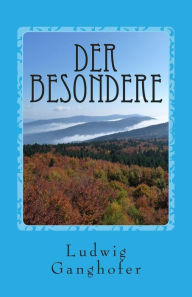Ludwig Ganghofer
Ludwig Ganghofer (7 July 1855 – 24 July 1920) was a German writer who became famous for his homeland novels.He was born in Kaufbeuren, Bavaria, the son of forestry official August Ganghofer (1827–1900). His younger sister Ida (1863–1944) marrie
... Read more
Ludwig Ganghofer (7 July 1855 – 24 July 1920) was a German writer who became famous for his homeland novels.He was born in Kaufbeuren, Bavaria, the son of forestry official August Ganghofer (1827–1900). His younger sister Ida (1863–1944) married the geologist and geographer Albrecht Penck in 1886, the geomorphologist Walther Penck was Ganghofer's nephew. He graduated from gymnasium secondary school in 1873 and subsequently worked as a fitter in Augsburg engine works. In 1875, he entered Munich Polytechnic as a student of mechanical engineering, but eventually changed his major to history of literature and philosophy, which subjects he studied in Munich, Berlin and Leipzig. In 1879, he was awarded a doctorate from the Leipzig University.
Ganghofer wrote his first play "Der Herrgottschnitzer von Ammergau" (The Crucifix Carver of Ammergau) in 1880 for the Munich Gärtnerplatz Theatre. It was so successful that it was performed 19 times. But his break-through was a guest performance of this play in Berlin, where it was staged more than 100 times. Subsequently, Ganghofer worked as dramaturge at the Vienna Ringtheatre (1881), as a freelance writer for the family paper Die Gartenlaube and as a feuilleton editor of the Neues Wiener Tagblatt (1886–1891). In Vienna, Ganghofer was a frequent guest at the salon in the Palais Todesco, where he met with artists like Hugo von Hofmannsthal and Johann Strauss. Since 1891, he was working mainly as a writer of Alpine novels, inspired by the sojourns at his hunting lodge near Leutasch in Tyrol; but he also produced e.g. Hugo von Hofmannsthal's play "Der Tor und der Tod". He also founded the Munich Literary Society.
Less

























